Best TV in Australia for 2025: the top screens for every budget
The best TVs you can buy in 2025, from great budget bargains through to premium OLEDs
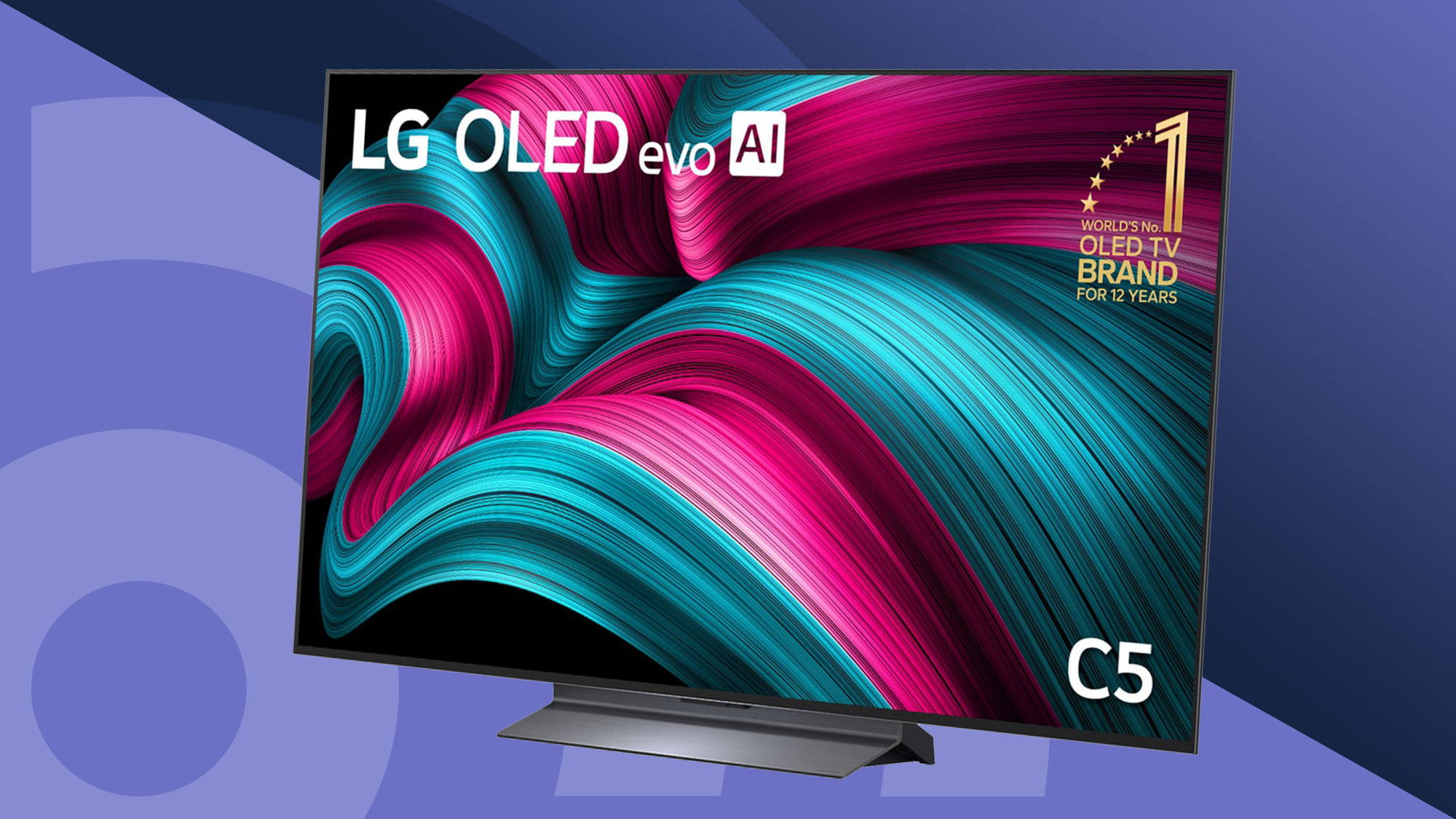
Finding the best TV for your home feels like it's getting increasingly more difficult – there are myriad options featuring various screen technologies and jargon-filled features.
What makes the choice even more tricky is that top-performing screens are becoming more and more affordable, so whereas before you'd need to spend thousands to get a great image at home, you can now pick up a talented performer for a fraction of the price.
This guide is here to help you find the best TV to fit your budget, based on our own reviews and testing. We've come up with a definitive shortlist of the screens we think are most worth your money, covering budget options all the way through to the latest and greatest flagship sets.
We're confident you'll find a TV to suit your home and needs in this list – if you don't see something you like, we may still have tested it, but we just think the models we've selected offer greater overall value. If you're looking for something specific, be sure to check out our guides to the best gaming TVs, best mini-LED TVs, or the best OLED TVs. Alternatively, if you know you want a truly big screen, check out our guide to the best 75-inch TVs in Australia.
The quick list
Below you can find a roundup of our choices for the best TVs in Australia right now along with our summarised opinion. You can jump to a more detailed review of every pick, along with a price comparison tool to help ensure you find the best deals.
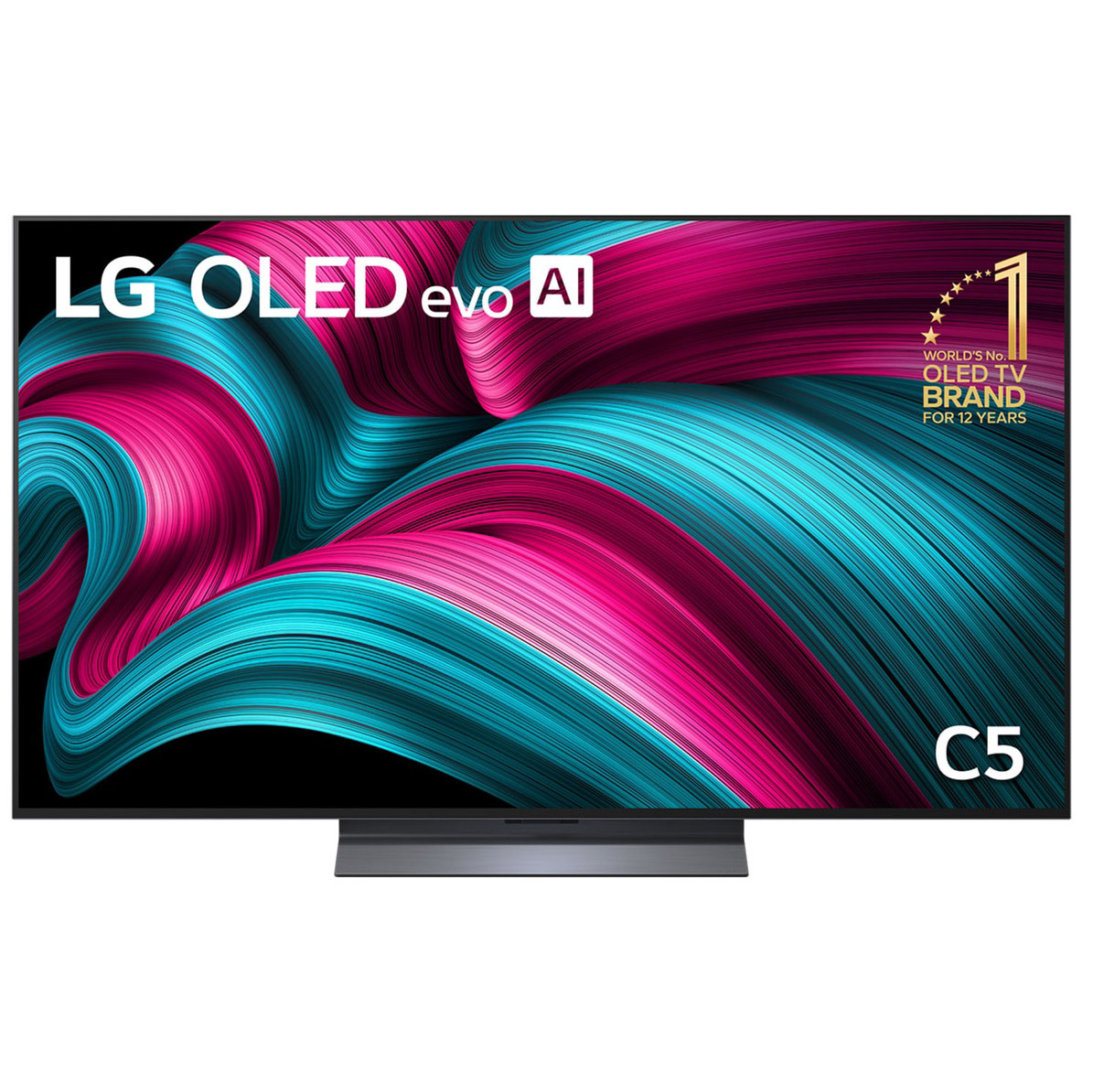
The best for versatility
Gaming, picture quality, an intuitive smart TV platform, and a wealth of sizes from 42-inch all the way up to 83-inches; the LG C5 ticks more boxes than most.
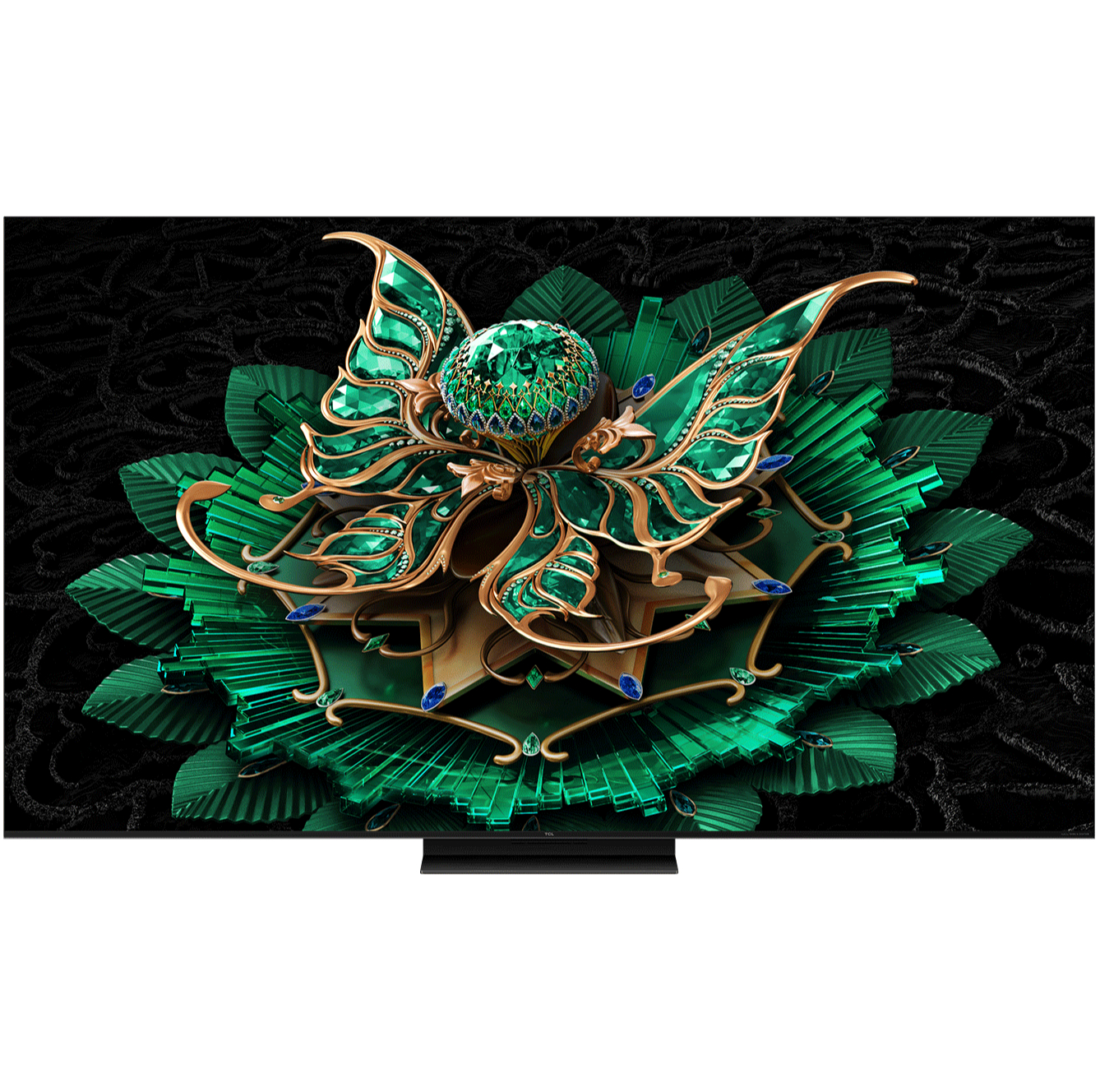
The best mid-range TV
TCL continues to prove that it's possible to get an excellent mini-LED TV with a wealth of gaming features for a wallet-friendly price in the C7K.
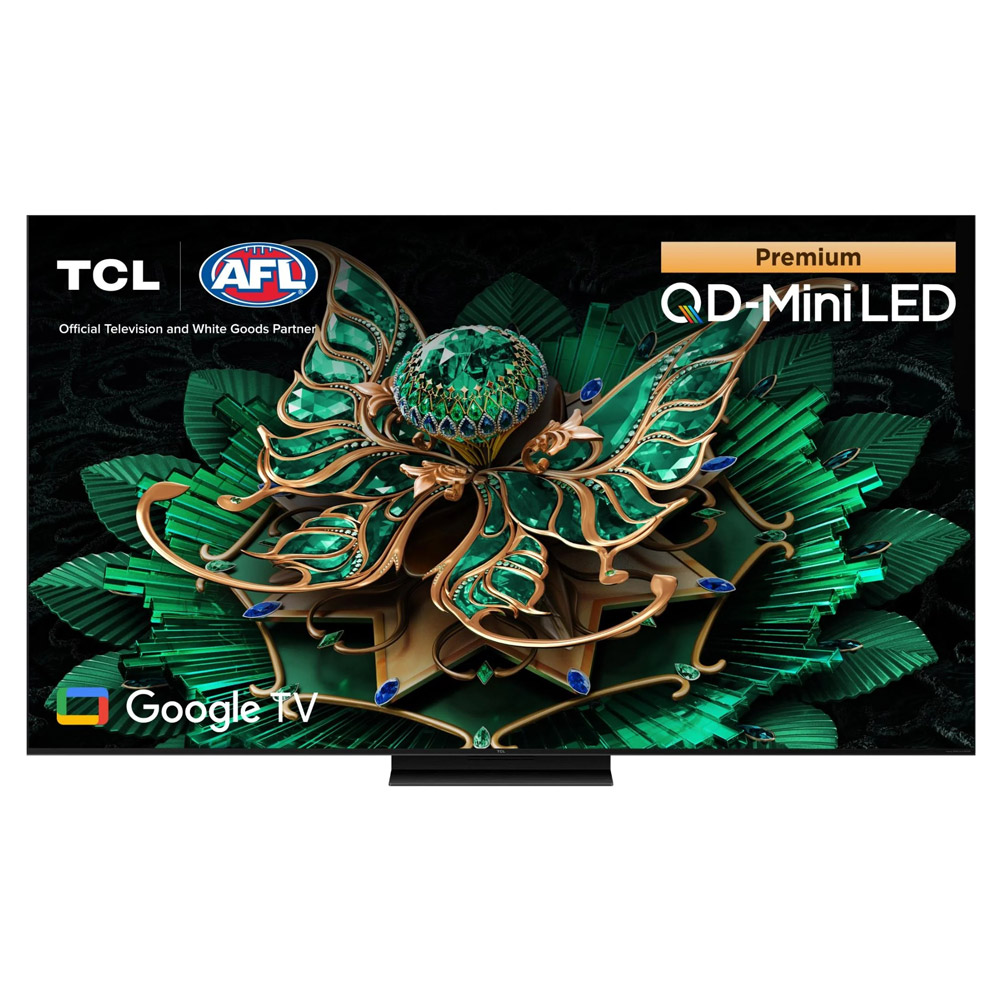
The best budget TV
Offering a wealth of useful features and a vibrant, colourful picture, the TCL C6K is a fantastic budget TV option.
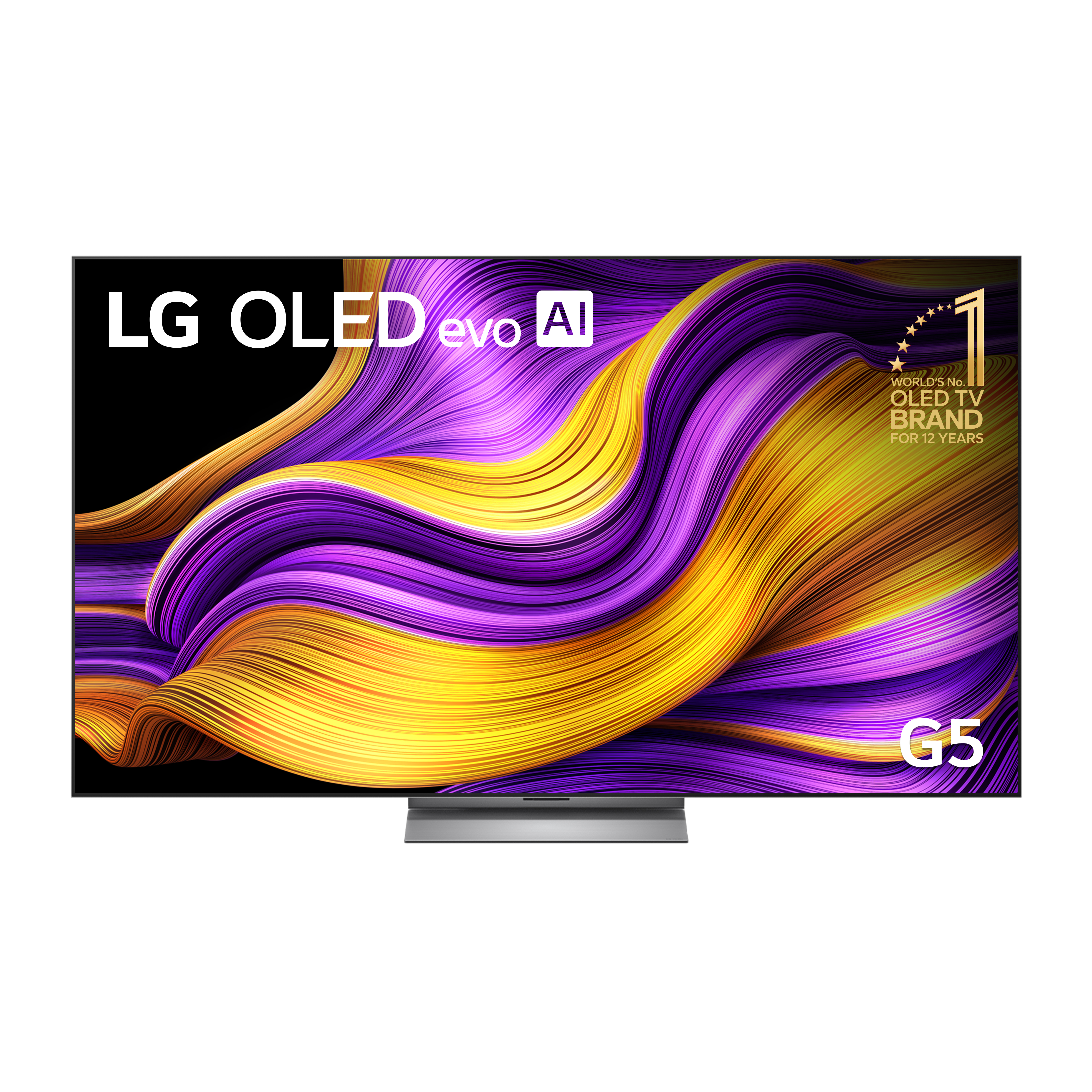
The best premium OLED TV
Stunning picture quality and brightness, nearly every feature you'd need, all wrapped up in a gorgeous design. The LG G5 is the very definition of a premium OLED TV.
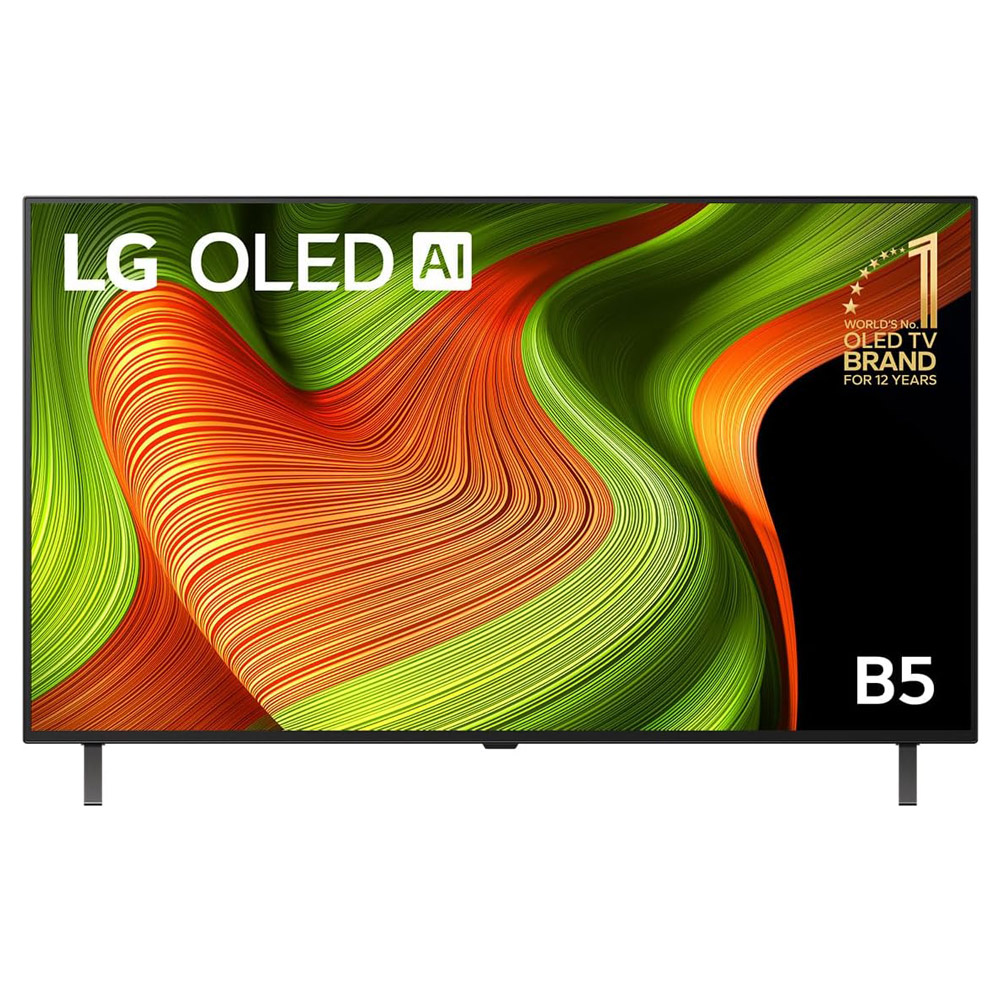
The best cheap OLED
Want to experience the benefits of OLED without spending big money? The LG B5 is a phenomenal TV that balances quality, performance and price.
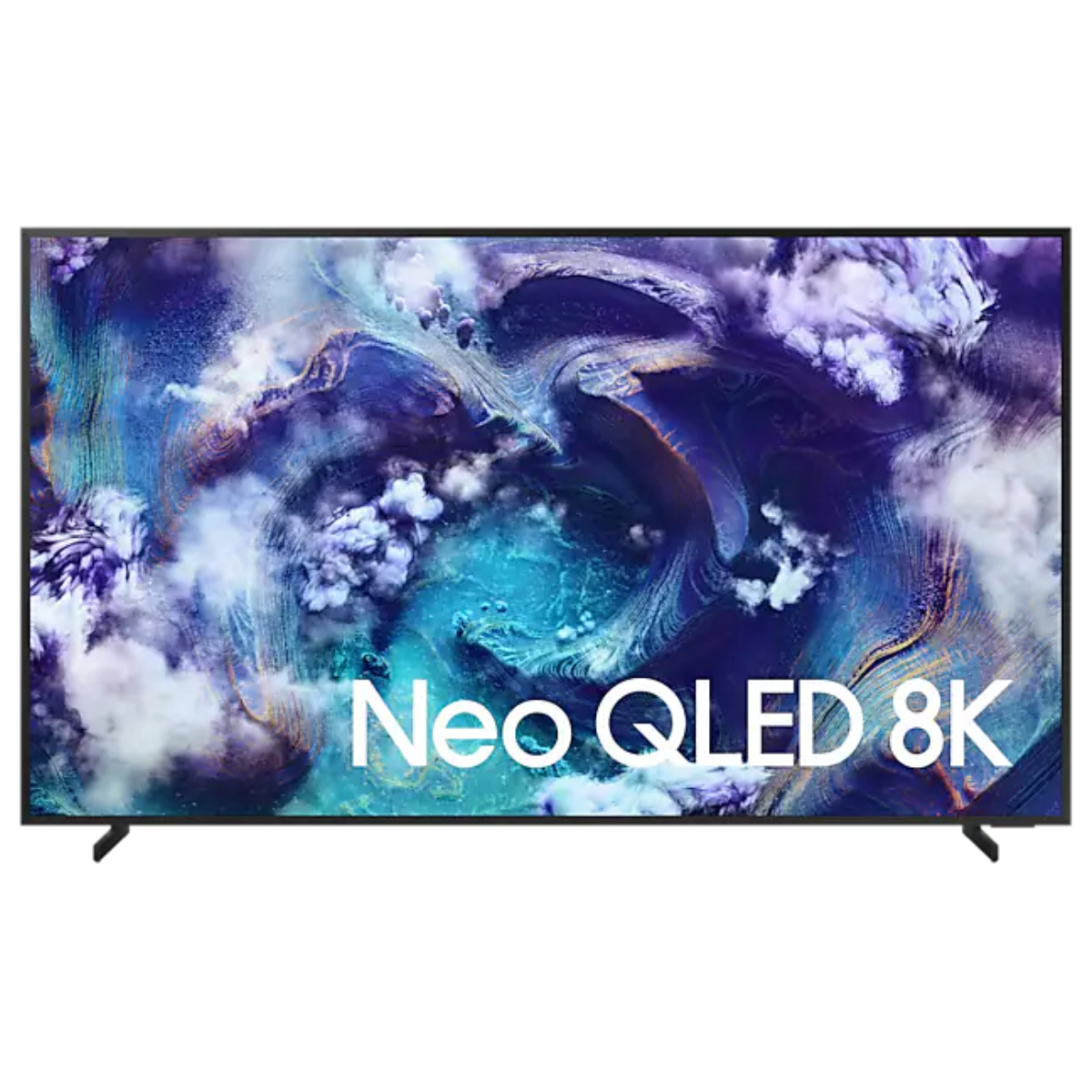
The best 8K TV
Improving upon its predecessor in ways we didn't think possible, the Samsung QN900F is a stunning screen. And it's not even the company's flagship for 2025!
Load the next products...
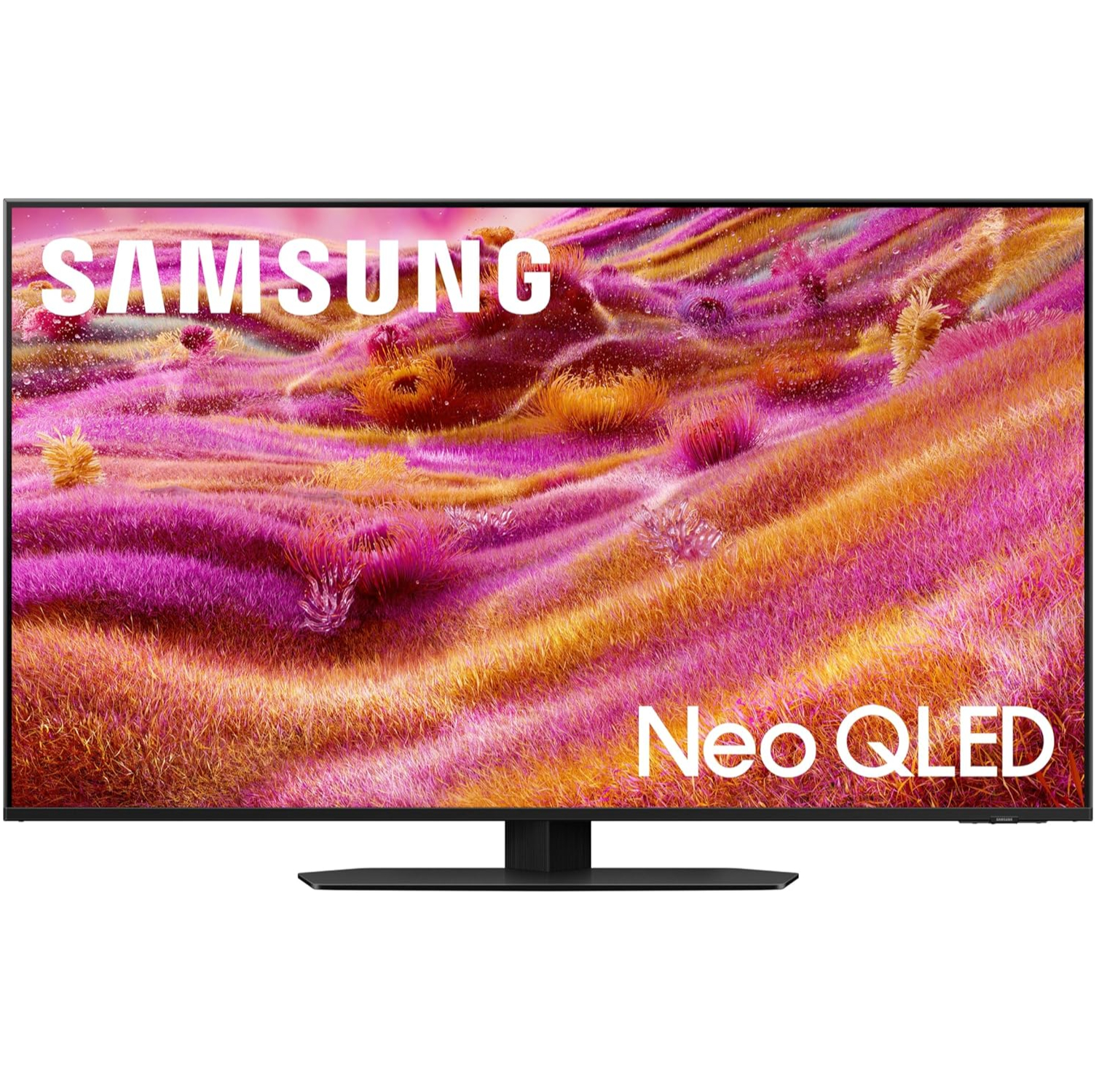
The best bright TV for daytime sports
Samsung's QN90F hits exceptional brightness levels for watching on sunny days than almost any other set. Plus, an effective anti-glare screen make it ideal for sunlit Australian homes.
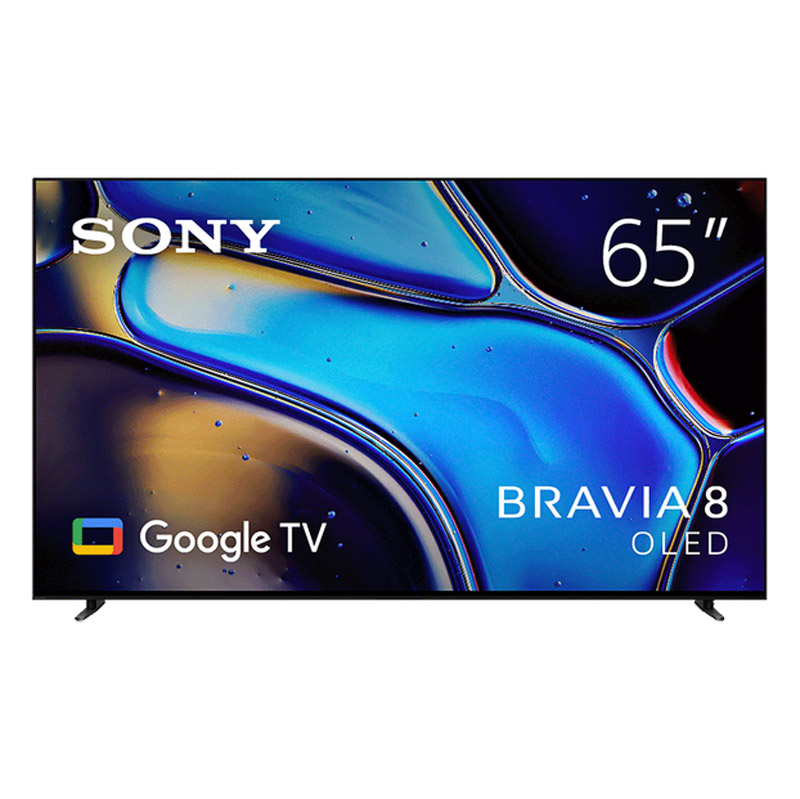
The best TV for sound
The Sony Bravia 8 delivers exceptional images, but it's the audio performance that wowed us. A vibrating screen coupled with dual subwoofers means you don't need to rush to add a soundbar.
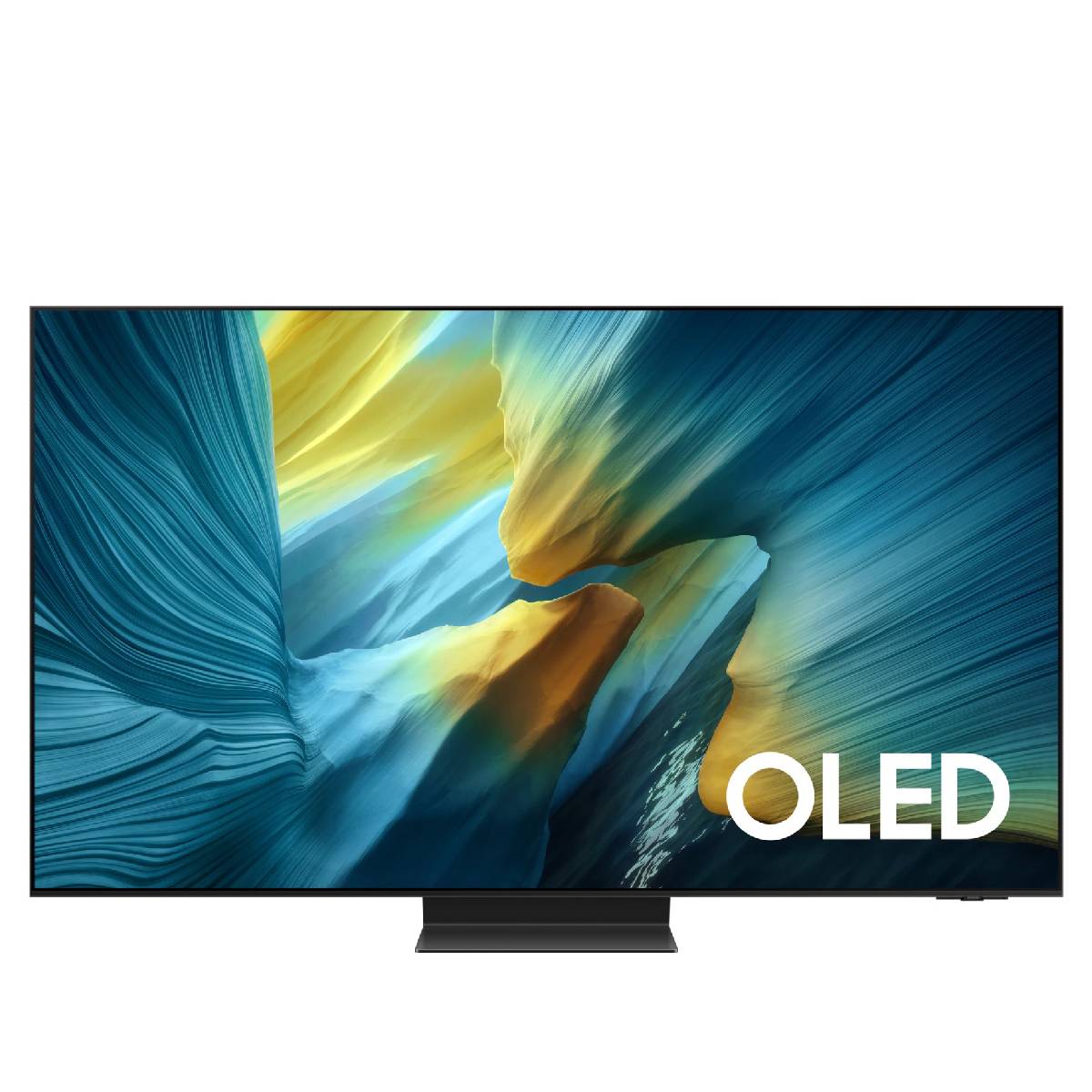
The best OLED TV for bright rooms
The Samsung S95F delivers high brightness and has an effective anti-glare screen, making it the perfect OLED for bright room viewing.
September 4, 2025
Added the Samsung S95F for the new category 'best OLED TV for bright rooms'. August 12, 2025
Added the LG B5 OLED in a new category, 'the best cheaper OLED'.
The best TVs in Australia 2025:
Why you can trust TechRadar
Below you'll find more in-depth reviews for each of the best TVs in Australia, along with links to the full reviews written by our TechRadar's team of TV experts.
The best TV for most people
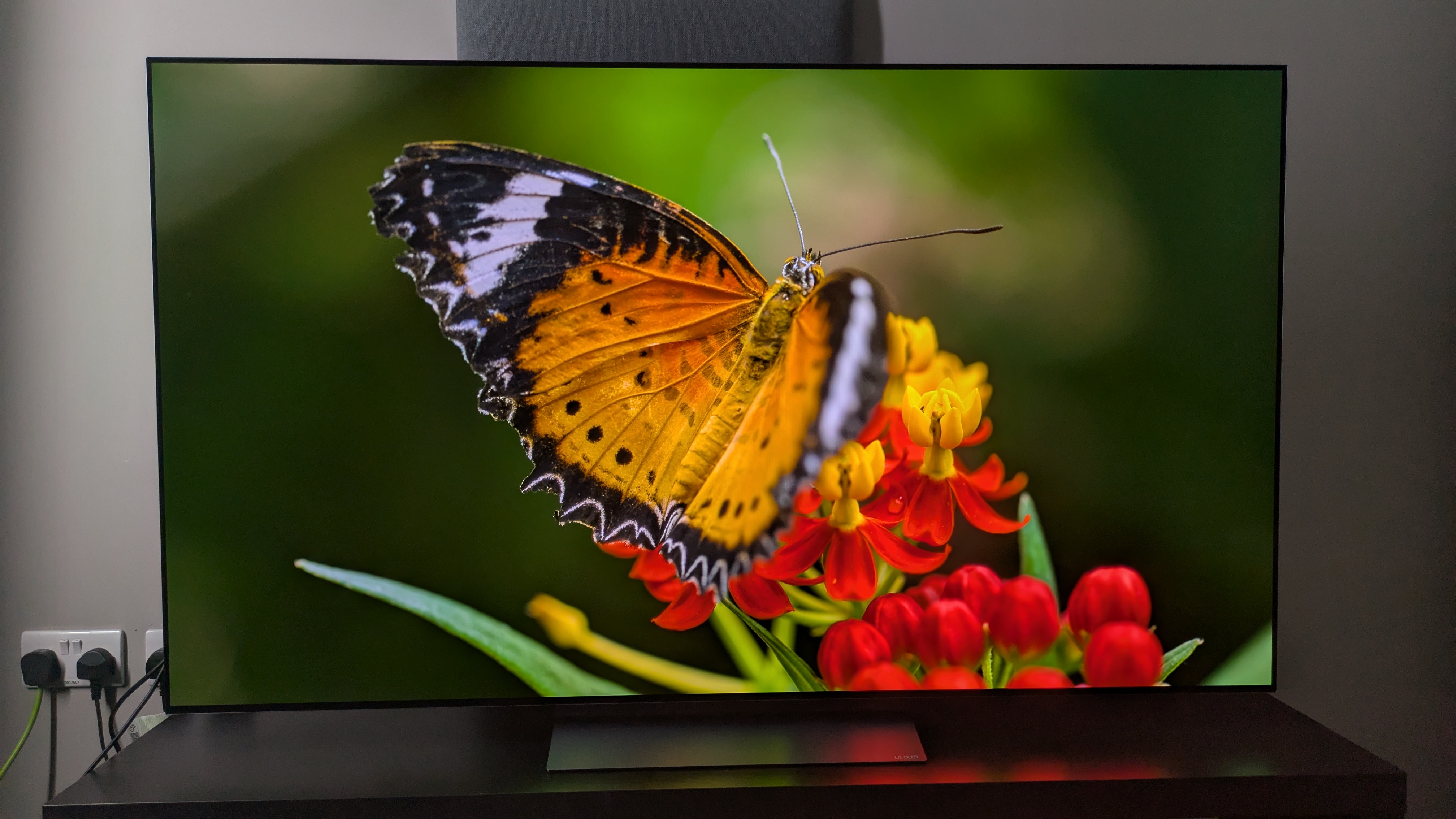
Specifications
Reasons to buy
Reasons to avoid
The LG C5 continues the LG C-series legacy of offering excellent value, making it one of the best all-rounder TVs on the market in the process. As with the C4 it replaces, the C5 OLED is available in a wide range of sizes – 42- to 83-inch – to suit all homes, budgets and needs. But it arrives with a host of new AI features and a new Alpha 9 Gen 8 AI Processor, giving it decent, not drastic, brightness boost.
We found from our testing that the LG C5 delivers a superb picture, including accurate colours, strong contrast and beautiful, natural textures. As with most OLED TVs, the C5 can struggle with reflections in brighter rooms, especially when a darker scene is on show, but turn the lights down and we can't imagine anyone will be disappointed by what they see.
The C5, along with other 2025 LG TVs, ushers in a new suite of AI features that includes AI Search that can be used to find content or adjust myriad settings from just a simple prompt and an AI Art feature that lets users create artworks using paid-for credits.
As for gaming, the LG C5 continues to serve as a fantastic option for those with next-gen consoles and even PCs. Stacked with features across four HDMI 2.1 ports including 4K, 144Hz support, VRR (including AMD FreeSync and Nvidia GSync) and its own useful Game Optimizer tool to name just a few, the C5 is sure to make gamers happy - and its 42-inch will suit PC gamers too.
It also arrives with webOS 25 as its smart TV platform, which remains one of our favourites to use. It's simple to navigate (and easy to learn) and on the whole presents as a rather tidy option compared to some other TV OSes.
Read the full LG C5 OLED review
The best mid-range TV
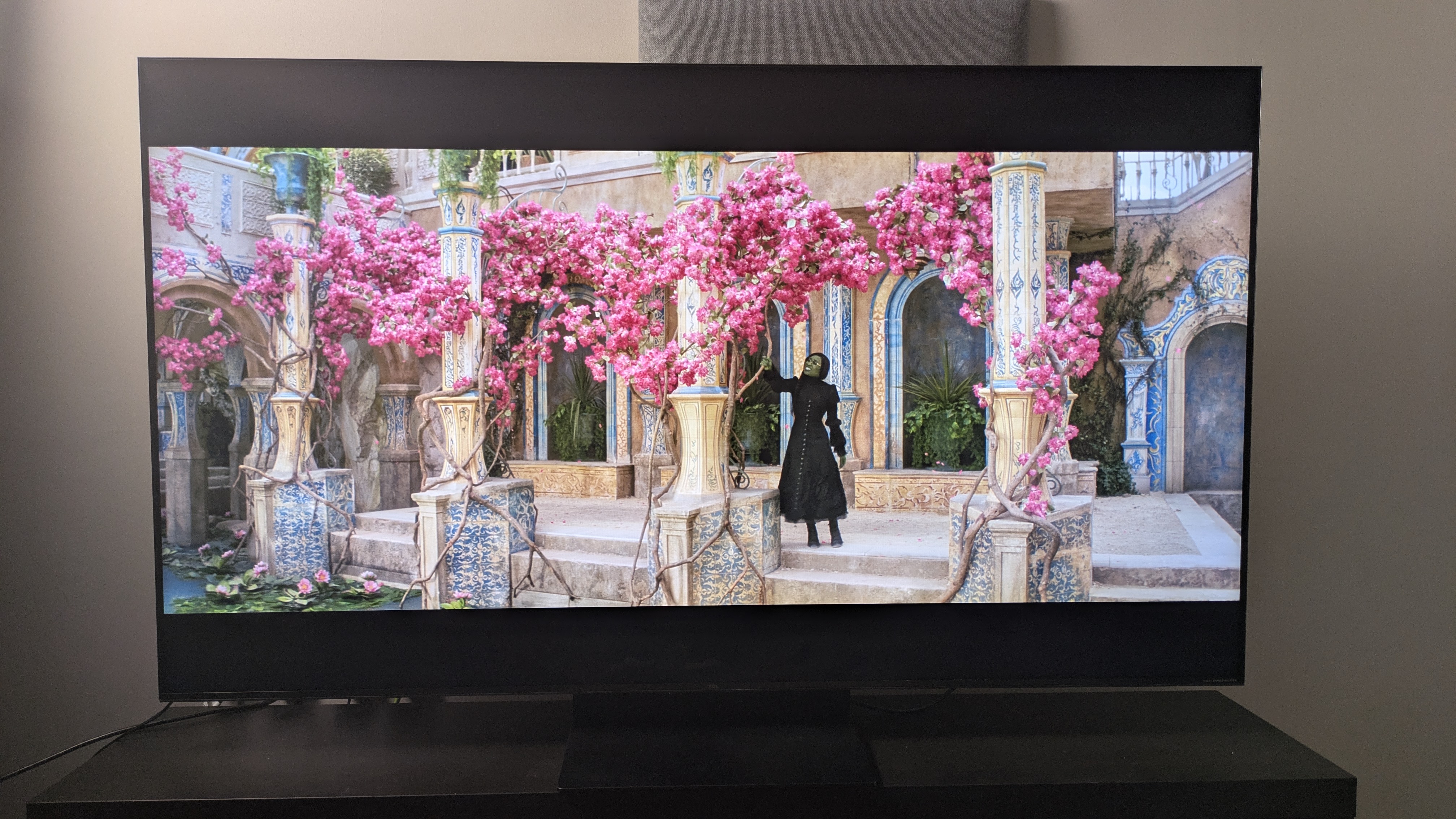
Specifications
Reasons to buy
Reasons to avoid
TCL has long had a strong track record for producing quality, affordable screens and the TCL C7K continues that trend. It's a solid mini-LED TV, offering plenty of features for an affordable price, making it a great option for anyone with a limited budget, but who wants to maximise their investment. It may not be top in its class, but it does a lot right.
Picture quality on the C7K is mostly good, with vivid colours and surprisingly deep black levels. Its motion handling is also impressive, although it does require a bit of tweaking to get the best results. Fans of black and white movies will have to put up with a screen uniformity issue that adds a brown tone to the edges of the screen, but this is our only real complaint with the C7K's picture.
Gamers looking for a budget gaming TV should pay particularly close attention to the C7K, as it supports 4K 144Hz, VRR (AMD FreeSync Premium Pro), ALLM and Dolby Vision gaming. Not only that, but its performance is smooth even during the most intense gaming sequences, thanks to its respectable 13.5ms input lag time.
It's not all perfect, mind you, and the C7K does fall down in some areas, namely its built-in sound, but it's hard to argue against its value – plus, we nearly always recommend you add a soundbar to improve the audio performance of your chosen screen. The level of features and the quality it delivers for the price mean it's an easy budget buy recommendation.
Read our full TCL C7K review
The best budget TV
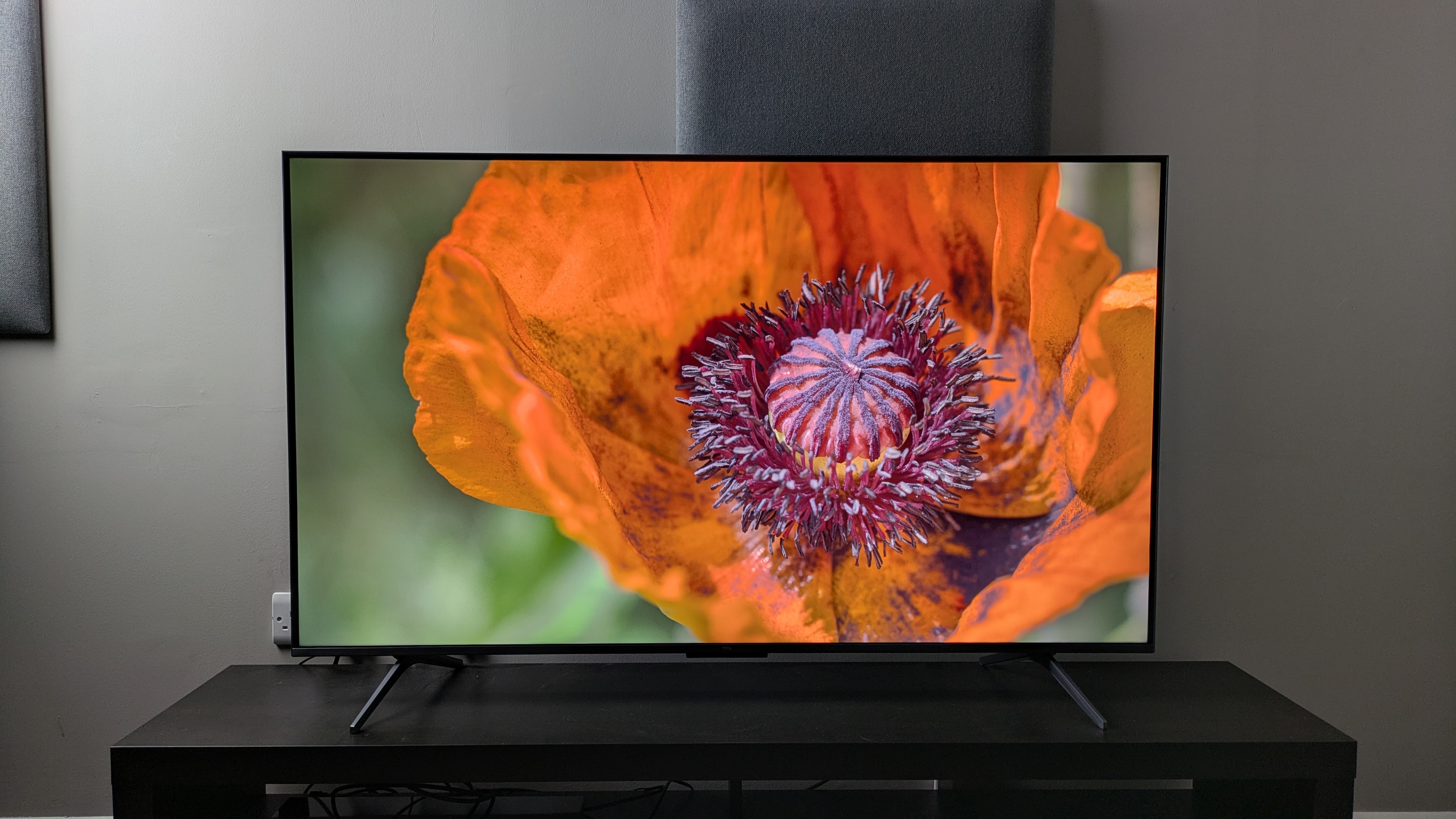
Specifications
Reasons to buy
Reasons to avoid
Whether your budget is limited or you're looking for a cost-effective TV for a second room, or even to use as a gaming TV, the TCL C6K is a fantastic choice. Like its C7K sibling above, the C6K offers plenty of features at an even more affordable price. It's not a perfect screen by any means, by it does more right, than wrong.
Picture quality is admirable for the price, and we actually recorded higher fullscreen brightness figures than we were expecting, in both Filmmaker and Standard modes. The result is a picture that's full of vibrancy and punch. In fact, as we noted in our review, "colour is one of the C6K's strong suits. A Disney Plus stream of Elemental, viewed in Dolby Vision Dark picture mode, demonstrated vibrant, punchy colours, particularly when Ember does glass-making."
Black levels are also great for TV in the C6K's price bracket, especially when it's fed high-quality 4K content. Some black crush can creep in in particularly dark scenes, but it's something to be expected at this price level. Viewing angles aren't amazing either, so take this into consideration if you know you're going to have a large group of people crowding around at one time.
It's also worth noting that the C6K's feet are set wide apart no matter the screen size, so make sure your media unit will be able to accommodate it if you don't go down the wall-mount route.
Gaming is a strong suit, with 4K 144Hz, VRR (AMD FreeSync Premium included), Dolby Vision gaming and ALLM support. Lag time is decent, and the dedicated Game Master mode is effective. Just note there are only two HDMI 2.1 ports.
Overall, it's a great example of what you can get without spending a lot of money, and is the best budget TV in our opinion, based on the models we've tested to date.
Read our full TCL C6K review
The best premium OLED
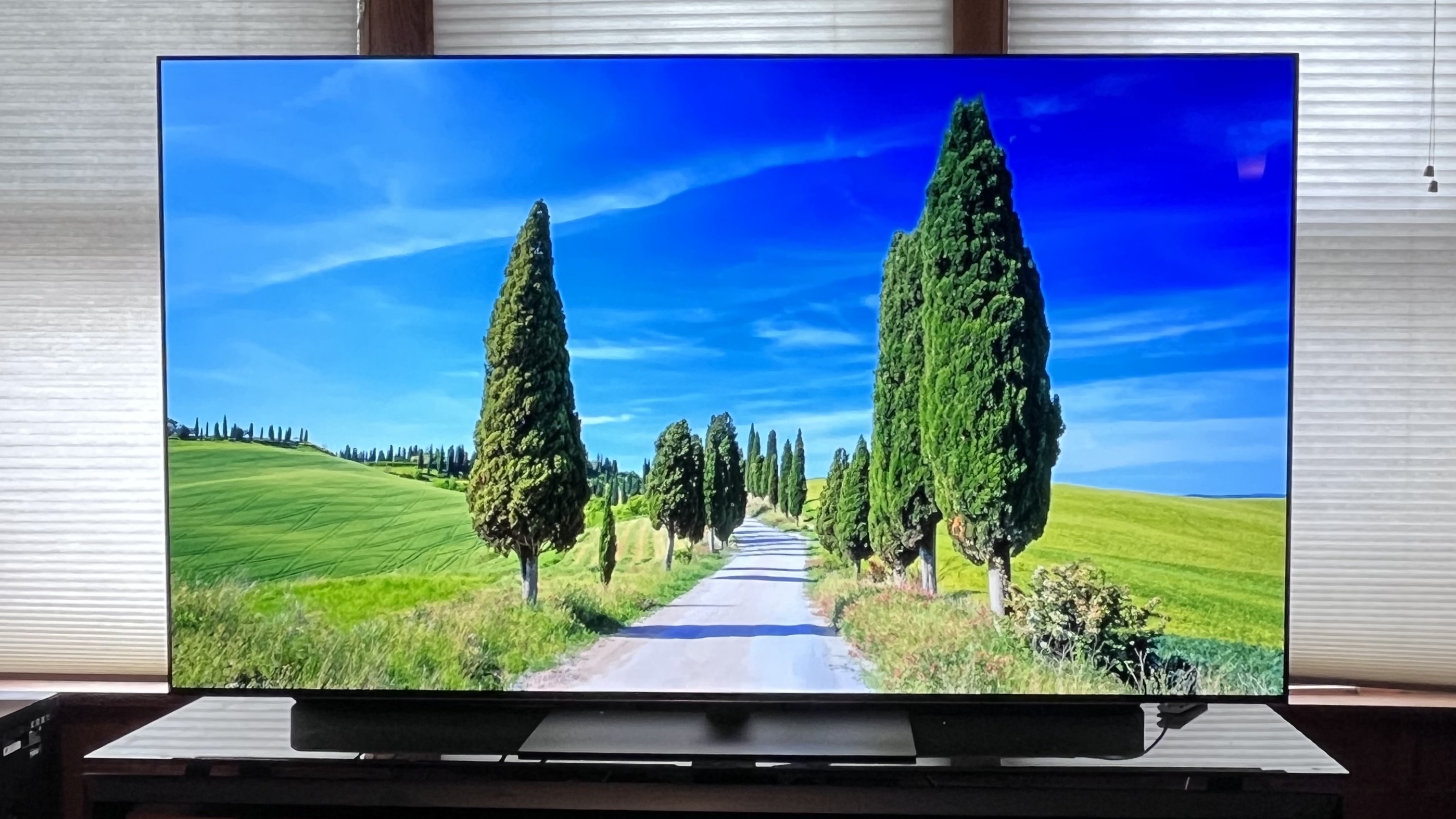
Specifications
Reasons to buy
Reasons to avoid
The LG G5 has arrived this year as a much bigger upgrade over the G4 it replaces, than the G4 was over the 2023 G3. It benefits from a new type of OLED panel, allowing it to go much, much brighter and its new suite of AI-based tools are genuinely useful, adding to your viewing experience.
The latest OLED panel in the LG G5 uses Primary Tandem RGB technology – also known as four-stack – that provides the highest brightness we've currently measured on an OLED TV (it hit 2,268 nits in a 10% HDR window in Filmmaker Mode) but still delivers incredible picture quality, even in the brightest of settings, thanks to an improved anti-reflective coating. As we noted in our review "contrast, colour saturation, and shadow detail all held up nicely even with overhead lighting on". The G5 now stands as another OLED that can be used in bright rooms, without any compromise on picture.
LG's TVs have been powerhouse gaming TVs for a good few years now and the G5 absolutely continues that tradition. 4K at 165Hz, VRR (AMD FreeSync Premium and Nvidia G-Sync), HGiG and Dolby Vision gaming are all supported across all four of the G5's HDMI 2.1 ports. Rounded off with a low 9.1ms input lag time and Game Quick Card that serves as a portal to a wealth of cloud-based gaming options, the G5 really is an incredible gaming TV.
LG's webOS smart TV platform has always been one of the best on the market and its latest iteration, webOS 25, adds useful AI tools, such as AI Search and AI Concierge, to make browsing for movies and TV shows even easier. We've already spoken about how much we love webOS' Quick Cards and Quick Menu and these are still as excellent as ever. webOS really is the peak of smart TV interfaces.
While the G5 is a premium priced TV and its built-in sound is good but not great, it currently sits as the 2025 premium OLED to beat.
Read our full LG G5 review
The best cheaper OLED
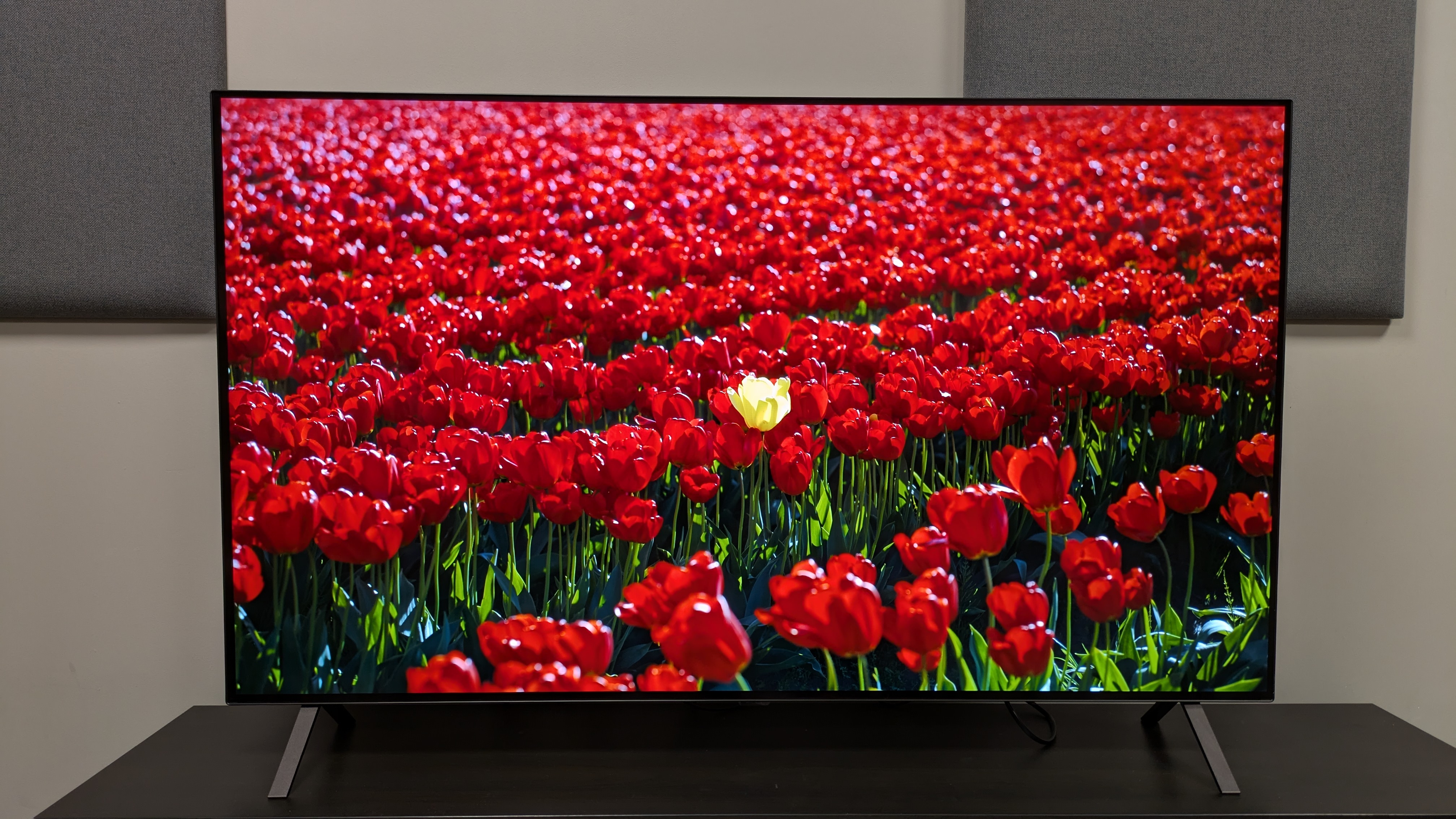
Specifications
Reasons to buy
Reasons to avoid
It might not come as too much of a shock to learn that we think the LG B5 is the best OLED TV for anyone without the budget to get either the mid-range C5 or the flagship G5. It's not just the price factor that has led us to our decision though, as the B5 OLED is, in its own right, a truly remarkable TV that does just as much to advertise the picture benefits of OLED technology as its higher-specced siblings.
It doesn't offer much in the way of upgrades over its predecessor, we must admit, but considering stock levels of the B4 are starting to dwindle in Australia, we've chosen to select the B5 for this guide. Despite using a WOLED panel (as opposed to the 'four stack' panel of the G5) and missing out on LG's evo brightness-boosting technology, the LG B5 still manages to deliver a great picture, packed with detail and bursting with vibrant colours. In true OLED fashion, contrast is also a big strength here, as are the deep blacks.
It's not the brightness TV ever (the evo tech is missed, to be honest) and that does mean it can suffer from annoying reflections. If you're watching in a dark room though, this becomes a non-issue, and instead the B5 really shines.
Gaming is another strength of the B5 – as is the case with LG's other screens – with four HDMI 2.1 ports and support for 4K 120Hz, VRR (AMD FreeSync Premium, Nvidia G-Sync and HGiG), ALLM and Dolby Vision gaming. Input lag is also respectable at 9.1ms.
You're also getting the outstanding webOS 25 smart TV platform, which is easily the best iteration to date.
The main area where the B5 struggles is sound quality. Thanks to some AI upgrades, mids and highs are clear, but there's little in the way of bass. This is screen you'll really need to pair with a soundbar or larger speaker system.
If you can find a B4 for a price you like, we'd still recommend getting that instead. If the B5 OLED is all you can find in stock, however, then it's easy to recommend as a budget OLED TV.
The best 8K TV
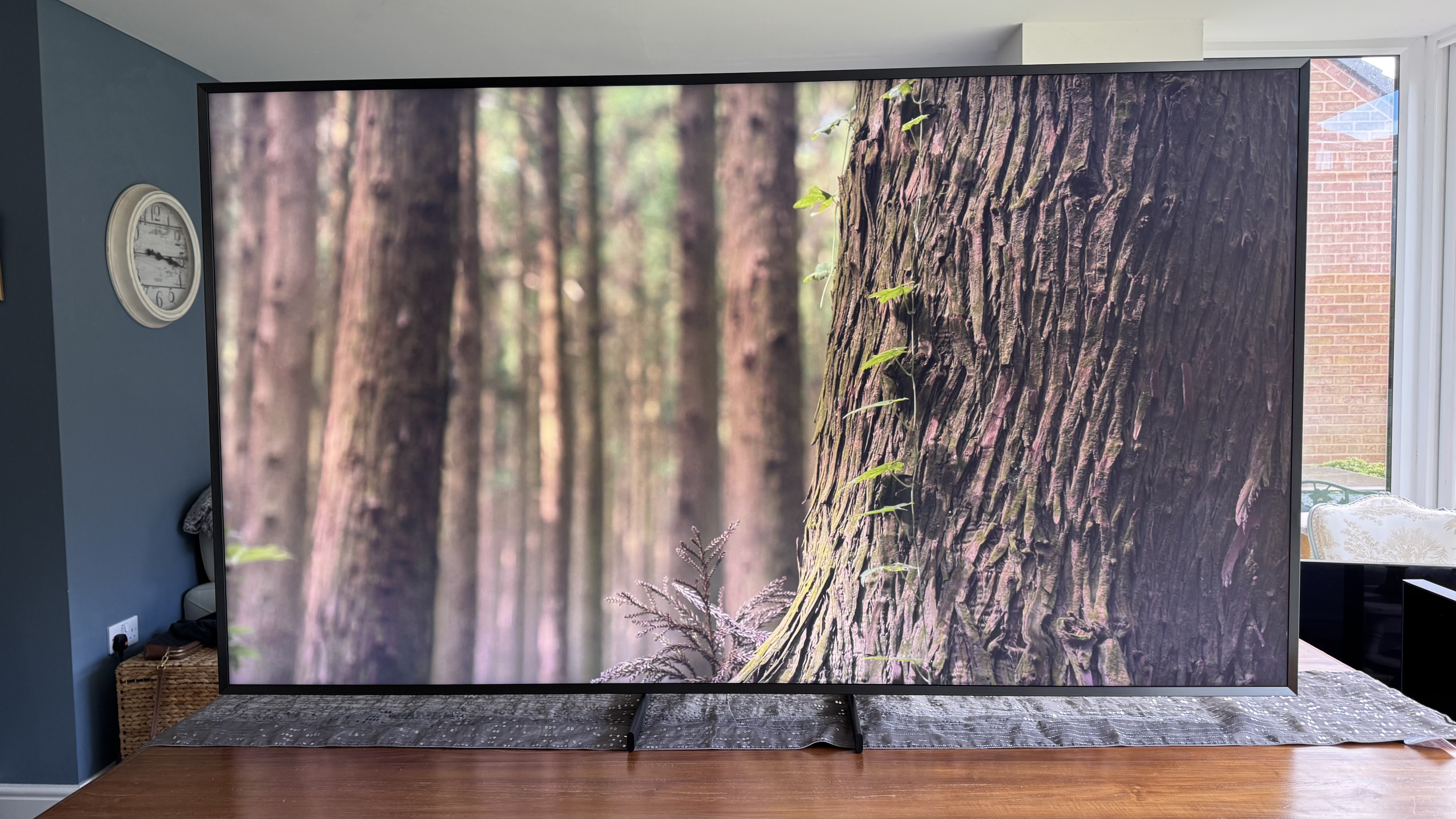
Specifications
Reasons to buy
Reasons to avoid
Despite there still being very little in the way of 8K content, it hasn't stopped Samsung from continuing to invest heavily in the technology. And with TVs such as the QN900F being the result of that investment, we're not complaining one little bit. This is an exceptionally talented TV that builds upon the superb QN900D from 2024, delivering not only an incredible picture, but a wealth of other features including gaming support and a plethora of AI enhancements, resulting in a jaw-dropping display. Just be prepared to pay for it.
What's particularly peculiar about QN900F's success, is that it uses a step-down processor compared to its predecessor. The QN900D was Samsung's flagship 8K screen in 2024, but this year, a step-up QN990F also exists. That means the QN900F here uses the NQ8 AI Gen2 processor, as opposed to the NQ8 AI Gen3 processor used last year (and which features in the QN990F). It's no slouch mind you, and it's more than capable of controlling light across its 1,146 local dimming zones, resulting in superb contrast and colour.
That allows the QN900F to deliver insane levels of brightness, but also incredible control of it to reveal fine details in images. Colours are rich and vibrant too, no matter the content. Motion handling is excellent, which will be a boon for those who love watching sports in particular. The only niggles we had with the display was that some screen glare was noticeable in brighter rooms and viewing angles can suffer a bit. Otherwise, it's practically faultless.
The built-in 4.2.2-channel speaker system is impressive for a slim TV, especially with its handling of Dolby Atmos soundtracks. If you really want to elevate your movie viewing experience then you will want to add a soundbar, but for casual viewing, there's a lot to like.
Read the full Samsung QN900F review
The best TV for sport
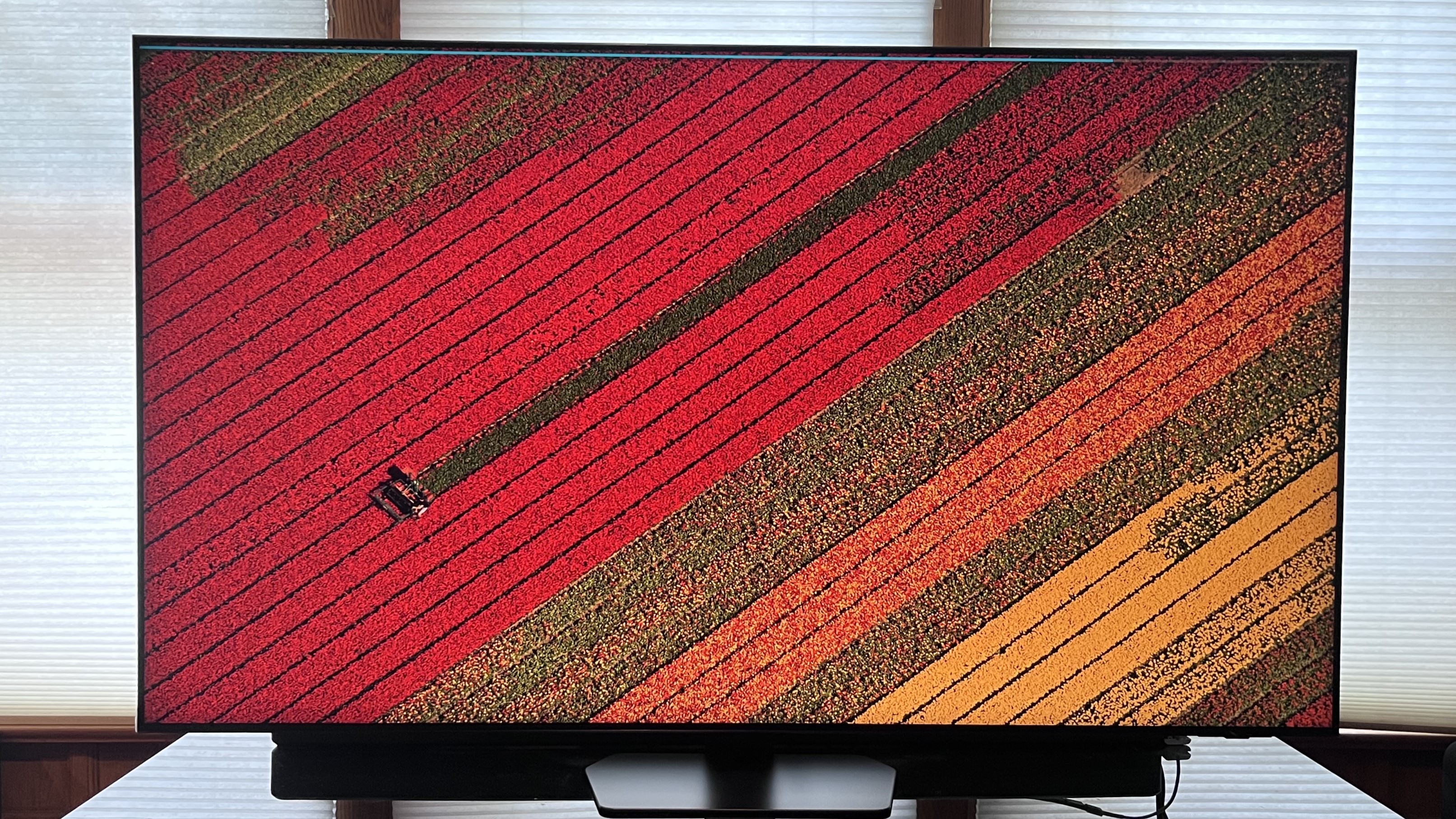
Specifications
Reasons to buy
Reasons to avoid
The Samsung QN90F combines exceptional brightness, an effective anti-glare screen and superb motion handling, resulting in it being the best TV for sports on the market.
This is especially true when you consider a good majority of sports viewing will take place during the day, when room lighting conditions can be much brighter. The QN90F easily overcomes this obstacle, as its Glare-Free screen banishes pesky reflections. As we said in our review, "Even when I turned on a lamp in front of the screen to see how it could handle strong light sources, the light was effectively diffused".
It's not just a one trick pony though, as the QN90F excels in other areas too. It also delivers vivid colours with plenty of detail, rich contrast and realistic textures, making it perfect for movies as well.
The QN90F is an accomplished gaming TV, too, supporting 4K 165Hz, VRR (AMD FreeSync Premium Pro included) HGiG, ALLM and even HDR10+ gaming. It also has Samsung's Game Hub, with access to a wide variety of cloud gaming options. We measured an ultra-low 9.5ms input lag time during our testing, meaning gaming is smooth and ultra-responsive.
Read our full Samsung QN90F review
The best TV for sound
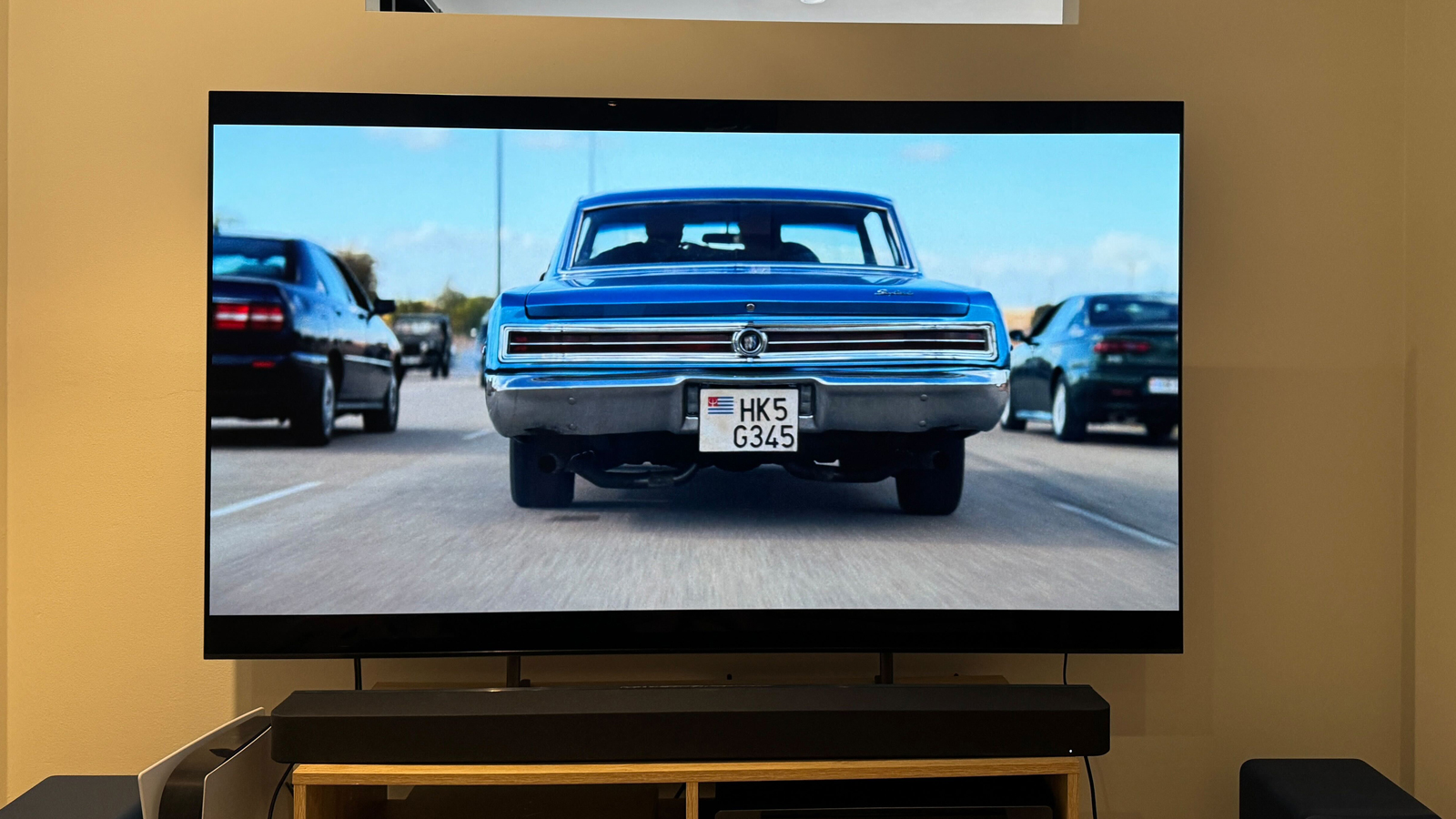
Specifications
Reasons to buy
Reasons to avoid
Sony's Bravia 8 OLED TV ushers in a fair few improvements over the excellent A80L, meaning it takes its predecessor's spot on this list. Once again, Sony has employed the use of its Acoustic Surface Audio+ technology that literally vibrates the screen to make sound with stunning results.
In our testing we found objects were placed accurately in the soundfield produced and because the sound comes from the screen itself, it is much more immersive than virtually all other TV sound systems. It does feature woofers for bass, but we must admit they don't offer the greatest impact, but we still conclude that if you come into ownership of the Bravia 8, there isn't the same essential need to add an external audio device as there is with other screens.
Sony has also made improvements to the picture, particularly where brightness is concerned. It's not a huge step up over its predecessor as it still uses a WOLED panel, but thanks to its new XR Processor, it is unmistakably brighter. The increase in brightness, combined with its gorgeous reproduction of colours, makes for sublime viewing.
As you might expect from Sony, the Bravia 8 has the PS5 front of mind and will automatically adjust picture settings when it detects one is connected via Auto HDR Tone Mapping. A dedicated Game Menu lets you quickly adjust further settings if you wish. It also benefits from two HDMI 2.1 inputs supporting 4K 120Hz video, variable refresh rates (VRR), and auto low latency mode.
While the Bravia 8 may not be our pick for the best, it nonetheless does more than enough to earn its place in the conversation about the top TVs money can buy and for those looking for a solid OLED at a price that won't entirely blow their budget, it might very well be a perfect fit.
Read the full Sony Bravia 8 review
The best OLED TV for bright rooms
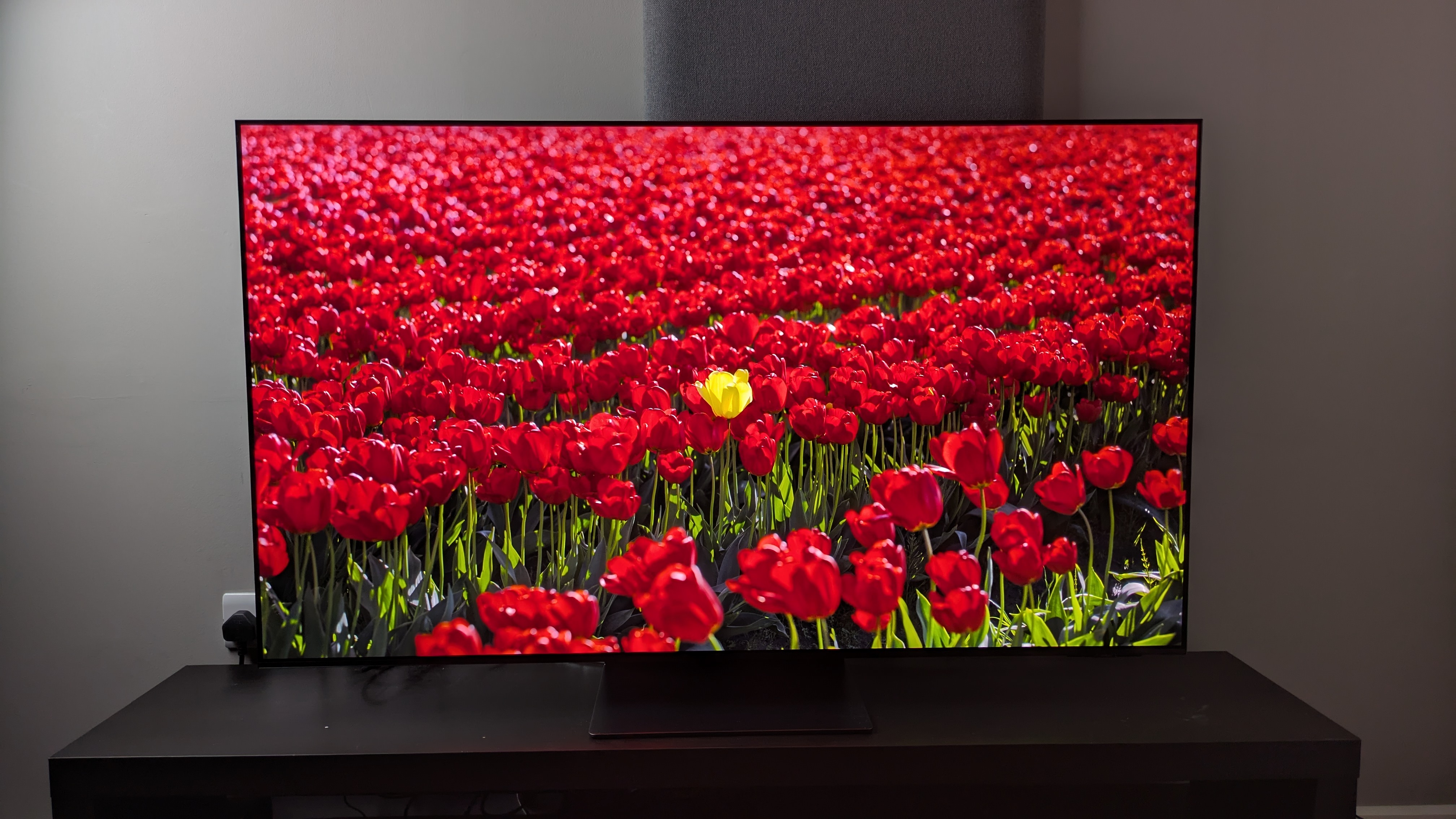
Specifications
Reasons to buy
Reasons to avoid
2025 has been a fantastic year for OLED TVs, so it's no mean feat that LG occupies the best premium spot further up. However, the Samsung S95F is also worthy of a mention, and if you predominantly watch TV or movies with overhead lights on, this is the screen to get.
This is because most OLED TVs (including the LG G5 to some extent) are equipped with glossy screens, which can cause mirror-like reflections that can be a real issue when viewing in bright rooms. The Samsung S95F comes equipped with a Glare Free screen that, along with its high brightness for an OLED TV, allows for even the darkest movies to be viewed in bright rooms.
It's not just talented at banishing reflections, as the S95F also impressed us with its overall picture quality, delivering spectacular colours, rich contrast with deep black levels, and realistic textures. We did still see some black crush in some movies, but it's improved here from its S95D predecessor. Although, we would argue that, for the price the S95F commands, we shouldn't see any black crush at all.
If you're a gamer, you'll be pleased with the S95F's performance and features. It has four HDMI 2.1 ports that support 4K 165Hz, AMD FreeSync Premium, Nvidia G-Sync, ALLM and HDR10+ gaming. In our tests, its input lag clocked in at 9.5ms, a super-low result that accounts for the S95F's ultra-responsive performance.
The S95F has a sleek, modern design with an external connections box to keep cables tidy. It also has solid sound quality and arguably the best version of the Tizen smart TV interface to date. It may be a premium TV, but if you want an OLED for your bright room, look no further.
Read our full Samsung S95F review
What is the best TV?
For us, the best TV is the one that gives you the best overall value. We place particular attention on picture quality, sound quality, how easy it is to use and which connections it has, along with any other noteworthy extra features.
We've chosen the LG C5 as the best TV for most people because of its excellent colour, contrast and overall picture performance that allow it to perform well in both bright rooms and dark rooms, the latter especially. Its audio performance isn't the absolute best, it must be said, but this can be fixed by adding one of the best soundbars.
Our reviewer also noted how good of a performer it is when it comes to gaming, and the fact that it offers many of the benefits of OLED technology, without reaching the potentially unobtainable pricing of the G5 flagship.
How to choose the best TV
When shopping for a new TV, there are as many things to consider as there are terms and abbreviations to try and get your head around. This can range from screen technologies (eg. OLED, QLED, Mini-LED, etc) to assets like HDR, VRR and Dolby Atmos, each of which are features worth considering when shopping for a TV but can be challenging to understand.
With this in mind, we’ve collected some of the key terms and technologies below to help you understand what they’re about and why they should matter to you:
Quantum Dot (QLED): QLED, which stands for quantum dot light-emitting diode, is a panel technology for TVs which sees a quantum dot filter layered over an LED panel to enhance visual quality. This quantum dot filter is a film of small crystal semiconductor particles which can be more precisely controlled to elevate the overall appearance of colours and contrast. When compared to the one-time norm of an LCD-LED screen, QLED overall offers superior brightness, colours and contrasts. Typically, QLED panels are also far brighter than OLED displays.
OLED: OLED, an abbreviation for Organic Light Emitting Diode, is a panel technology where each pixel emits its own light and therefore offers superior control for contrasts, colour and general picture. This differs from the LCD-LED displays that were once the norm which rely upon an external light source (backlighting). Similar to QLED, this allows OLED panels superior control when it comes to colours, contrast and overall picture quality to regular LCD-LED screens.
Read more on the differences between QLED and OLED TVs
Mini-LED: A more recent panel technology introduced to big-screen TVs, Mini-LED takes traditional LCD screens and drastically shrinks the size of the LED in the backlight behind it – oftentimes while including a quantum dot filter, too. Again, much like with QLED and OLED this allows for superior control of the backlighting, resulting in boosted colours and more accurate contrast. Mini-LED TVs may not quite match the perfect contrast levels seen in OLED TVs, but they do come reasonably close – all without the sacrifice to brightness or risk of burn-in.
Read more on the differences between Mini-LED and OLED TVs
High Dynamic Range (HDR): HDR is a technology which allows televisions to display a much wider spectrum of colours. Believe it or not, modern HDR televisions are able to display roughly 1.7 billion colours – a significant leap from Standard Dynamic Range (SDR), which is capable of a little under 17 million colours. HDR is therefore simply an indication that a TV boasts the ability to display clearer, more dynamic colours with more realistic transitions between shades, as well as deeper shadows which have the capacity to show more detail in the darkness.
The two most common HDR formats are either HDR10 or HDR10+, with HDR10+ considered to be the superior of the two as its name would suggest.The ‘10’ in the name refers to HDR’s 10-bit colour depth (SDR, by comparison, has an 8-bit colour depth).
HDR10+ is similar to Dolby Vision (see below), in that it uses dynamic metadata to adjust colours and brightness on a scene-by-scene basis. However it is available at an open standard which means content makers can take advantage of what it offers their content without having to pay the kinds of licensing fees they would with Dolby Vision.
Read more on HDR10+ and what it means for you
Dolby Vision: While Dolby Vision is similar to HDR10+ in a number of ways, it’s still considered a superior format, in that it can be mastered at up to 12-bit colour depth.
The latest update to Dolby Vision known as Dolby Vision IQ takes advantage of Dolby Vision’s existing picture and processing prowess while working with a light sensor to respond to various conditions that may otherwise impact the picture. This ranges from its ability to detect when you are watching in a particularly bright room and therefore adjust accordingly, to its ability to detect the different types of content you are engaging with on your TV such as movies, games, sports, etc.
Read more on Dolby Vision and what it means for you
What about gaming? If your primary concern while shopping for a new TV is what it can offer for gaming performance, various terms and features will emerge as relevant for you. To help you understand what these are, we have included a helpful guide in our list of the best gaming TVs to offer some assistance.
How we test the best TVs
The best TVs are chosen by our writers and editors based on a few main criteria: their overall picture performance including contrast, colour saturation and motion handling, as well as their feature set, design and the operating system they run on. We're looking for TVs that are well-built and have the technology to last for the next few years.
Obviously, there is some subjectivity that goes into the review process, however we strive to maintain fairness across brands by testing the same type of content on each screen (HD/SDR, 4K/HDR, games, movies and music) and reporting what we've found the experience to be like.
We test the brightness and colour range using a colorimeter, and we ensure that we test 'out-of-the-box' as well as after calibrating the screens ourselves, so that we can tell you what you'll get if you don't tweak at all, as well as what the TVs are capable of in the right hands.
Like our readers, our writer's and editor's room layouts differ and may cause slight disparities in testing, however we make every attempt to question our assumptions and troubleshoot our issues with performance in every review.
FAQs
Which TV has the best picture quality?
On performance alone, OLED TVs typically have the edge on picture quality, offering deep blacks and stunning contrast, confident colours and improved viewing angles over other panel types. For brightness, Mini-LED appears to have the current edge, offering eye-scorching images without the risk of burn-in.
Beyond panel technology, TVs offering one or (even better) both HDR10+ and Dolby Vision will also offer superior value to picture quality potential than TVs which don’t support these formats.
Which size TV is best for home?
There really isn’t any ‘one size fits all’ when it comes to TVs – the answer really depends on your home, how you hope to use your TV, and other factors like how many people will be watching.
For the best viewing experience, any TV that’s 55-inches or above will get the job done, with anything larger than 77-inches potentially being overkill unless you have a large family and a big space to put it in. Smaller TVs don’t necessarily sacrifice on quality even if they do on size, and our list of the best 48- and 50-inch TVs can help you pick the right one for you.
Next steps
- Want better audio? Check out our guide to the best soundbars available.
- Once you've decided on a panel, make sure you read our guide on how to set up your TV to make sure you're getting the most out of it.
- Are you looking for the best universal remote for your new home theatre setup?
- Need something to watch on your new TV? check out our list of best TV streaming services.
The latest updates to this best TVs guide
August 7, 2025
Reassigned the TCL C7K to the 'best mid-range TV' pick. Added the TCL C6K as the 'best budget TV' option.
June 17, 2025
Replaced the Samsung QN900D with the Samsung QN900F as 'the best 8K TV'.
Replaced the Samsung QN90D with the Samsung QN90F as the 'best TV for sports'.
Replaced the TCL C755 with the TCL C7K as the 'best budget TV'.
May 23, 2025
Removed 'the best TV for gaming' as a category, since the majority of TVs already selected are great options for gamers with consoles or PCs.
April 30, 2025
Replaced the Samsung S95D with the LG G5 at the best premium OLED TV.
April 9, 2025
Replaced the LG C4 with the LG C5 as the best TV for most people.
Introduced a 'What TVs are coming for 2025' in FAQ's section that lists some of the TVs announced so far for 2025 that could enter this list throughout the year.
Added a 'More TVs to consider' section with recent models and reviews.
January 30, 2025
Replaced the TCL C855 with the TCL C755 as the best budget TV
January 16, 2024
Introduced a 'What TVs are coming for 2025' in FAQ's section that lists some of the TVs announced so far for 2025 that could enter this list throughout the year.
December 24, 2024
Removed the Samsung S90C due to falling stock levels. Replaced it with the LG C4 as 'best for most people/overall'.
Removed the Samsung QN90C and replaced it with the Samsung QN90D as the 'best for sports'
September 26 2024
Replaced the Sony A80L with the Sony Bravia 8 as 'best TV for sound'
Sign up for breaking news, reviews, opinion, top tech deals, and more.

Max is a senior staff writer for TechRadar who covers home entertainment and audio first, NBN second and virtually anything else that falls under the consumer electronics umbrella third. He's also a bit of an ecommerce fiend, particularly when it comes to finding the latest coupon codes for a variety of publications. He has written for TechRadar's sister publication What Hi-Fi? as well as Pocket-lint, and he's also the editor of Australian Hi-Fi and Audio Esoterica magazines. Max also dabbled in the men's lifestyle publication space, but is now firmly rooted in his first passion of technology.